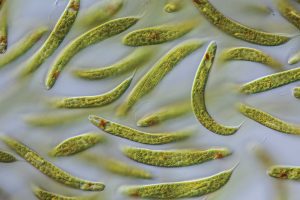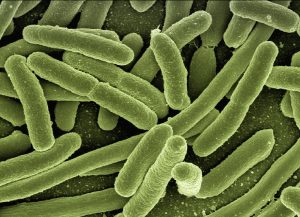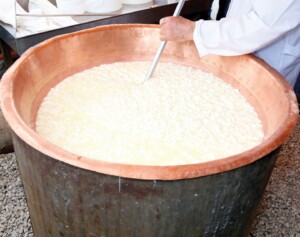Carolina LabSheets™
Overview
In this lab, students will observe Amoeba proteus as an example of an animal-like protist. Traditionally, amoebas were classified under Domain Eukarya, Kingdom Protista, and Phylum Amoebozoa. However, it is widely recognized that Protista is not a natural grouping. Amoebozoa are more closely related to fungi and animals than they are to other organisms included in the Protista. Today, protist is best used to denote eukaryotes that are unicellular or multicellular without tissues.
Needed Materials
Optional Materials
Some instructors prefer 131308 Vitachrome® prestained Amoeba proteus. These prestained amoebas are easier for inexperienced students to find. A stained microscope slide (295384) will show the nucleus more clearly. The slide and culture are available together as item 130803.
Safety
Ensure that students understand and adhere to safe laboratory practices when performing any activity in the classroom or lab. Demonstrate the protocol for correctly using the instruments and materials necessary to complete the activities, and emphasize the importance of proper usage. Use personal protective equipment such as safety glasses or goggles, gloves, and aprons when appropriate. Model proper laboratory safety practices for your students, and require them to adhere to all laboratory safety rules.
Amoeba proteus is not parasitic or pathogenic. Even so, know and follow your district’s guidelines so you are prepared if a student should ingest a culture. Cultures remaining after the completion of the activities can be flushed down a sink with tap water. The chlorine and chloramines in most tap water will kill the amoeba. If your tap water is not chlorinated, pipet 1 mL of bleach (sodium hypochlorite) or isopropanol (rubbing alcohol) into the culture and wait 15 minutes before flushing down the sink.
Procedures
When you receive your amoeba culture, remove it from the shipping container. Loosen and remove the lid. Use the dropping pipet included with your order to aerate the culture. After aeration, replace the lid loosely on the jar, but do not screw it down. Leave the culture undisturbed for 5–15 minutes, and then examine it with a dissecting scope (stereomicroscope) at 20–40x. When undisturbed, most of the amoeba will settle to the bottom of the container. Some may float free in the water column and a few may attach to the sides of the jar. Students should take samples from the area or areas where the amoebas are most concentrated.
Set up workstations for each amoeba culture. Students can work individually or in groups of two. Each station should have the following:
- amoeba culture
- dropping pipet
- microscope slides
- coverslips
Some students will find an amoeba quickly, but others may have trouble finding an amoeba—either because there is no amoeba on the slide or because the student does not recognize the amoeba. Amoebas are slow moving and can look like a bit of debris on the slide. Students who do not find an amoeba should look at the slide of a student who has found one. If they still do not find an amoeba, they can then prepare a new slide. Note: If a student squirts water from the pipet back into the culture jar or uses the pipet to stir the culture, this can disperse the amoeba and make them harder to find. If the student squeezes the pipet bulb in the culture this can blow any amoeba away from the pipet tip.
Failure to handle slides or coverslips by their edges can result in transfer of soap residue to the wet mount. Suspect this if you see amoeba with a smooth outline (no pseudopods) or that have stopped moving and are misshapen. Rupture of the cell (lysis) may occur. If this becomes a problem, demonstrate again the correct way to handle slides and coverslips by their edges. An occasional student may have to rinse his or her hands under running water and dry with plain paper towels before continuing.
Optional
Students can observe other members of the Amoebozoa to better appreciate the wide variety of organisms in this group. Chaos carolinensis(131324)is much larger than Amoeba proteus. Chaos is recommended for observations of phagocytosis (engulfing of food, in this case Paramecium) and observation of food vacuoles, which are much larger than those of amoeba and may contain recognizable Paramecium in the process of being digested. The large cell mass of Chaos contains many nuclei—up to several hundred—and numerous contractile vacuoles. Some of the cytoplasmic granules of Chaos are many times larger than those of amoeba. Difflugia lobostoma (131334) is an interesting amoeba with a shell (test), and it feeds on the freshwater alga Spirogyra. Physarum polycephalum (156193) is a slime mold, and yet another member of the Amoebozoa. For an example of pathogenic amoeba, see Microscope slides 295468 (cysts) and 295474 (trophozoites) of Entamoeba histolytica.
Using books and the Internet, students can report on what is known about the functions of the parts of the amoeba that they have observed.
Answer Key to Questions Asked on the Student LabSheet
Amoeba labeled

- Compare the two drawings you have made of the amoeba’s outline. How has the amoeba changed? Are these changes related to its movement? If so, how?
The outline has completely changed. The amoeba has no consistent shape. The amoeba moves by extending pseudopods and flowing into them. It may extend a pseudopod, then retract it and extend another one, but it generally moves in the direction of its extending pseudopods. - Amoebas are sometimes referred to as animal-like protists. Based on your observations, list at least two characteristics that amoebas have in common with animals but not with plants.
Amoebas move.
Amoebas do not have cell walls.
Amoebas consume food.
RELATED PRODUCTS
Microbiology Resources

Protists: Key to Algae Mixtures

Bacterial Growth on MacConkey Agar

Introduction to Protists: Euglena

Introduction to Prokaryotes: Cyanobacteria

Introduction to Prokaryotes: Bacteria

Introduction to Fungi

Introduction to Prokaryotes: Archaea

Introduction to Sterile Technique






